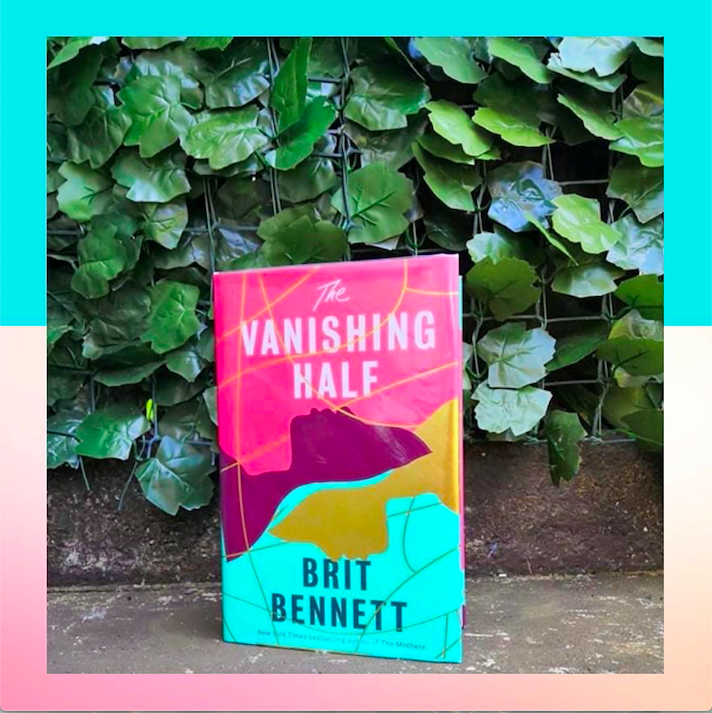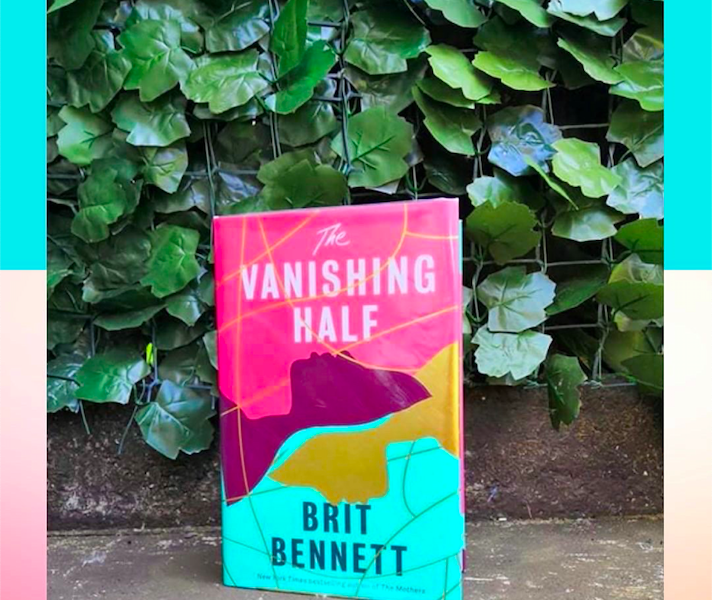In just a couple of weeks’ time, we’ll find out whether Brit Bennett’s sophomore novel, ‘The Vanishing Half,’ has won the coveted Women’s Prize for Fiction 2021. In my opinion, it more than deserves the accolade. Its greatest triumph is its ability to make readers sympathise with even the most seemingly unlikeable of characters. Once you fully realise the trauma behind Stella’s actions, your lens adapts and softens, and you see the pure fear motivating her every move.
The twins scattered, their lives splitting as evenly as their shared egg
The Vanishing Half by Brit Bennett
The beginning crucially lays out the foundation of the novel’s setting. The town of Mallard was established with a fixation on colourism, or as Desiree deems it, being ‘colourstruck.’ The founder, Alphonse, ‘imagined his children’s children’s children, lighter still, like a cup of coffee steadily diluted with cream,’ becoming ‘more perfect.’ This internalized racism underpins the plot as the twins, Desiree and Stella, are his great-great-great-granddaughters; his dream of generations of lighter-skinned descendants came true upon their entry into the world. Stella’s decision to commit to a life of white-passing stems back to this engrained mentality that governs their town, with their mother constantly forcing hats onto their heads to keep them as light as possible. Desiree’s daughter, Jude’s experience in Mallard shows the depths of the town’s toxic fixation on colourism. Jude lists the appalling names she’s been called for her skin colour and, through the focalisation of the narration, we see that she feels like ‘a fly in milk contaminating everything,’ affecting her ancestor Alphonse’s dream. Jude’s character arc made her one of my favourite characters because of her loyalty to her loved ones and her inspiring fortitude.

This novel is an emotional page-turner. The fact the twins take completely different paths in life made my heart ache for them. Due to the way Bennett sets up Desiree and Stella’s close bond at the start, I was extremely invested in the prospect of them reuniting, which meant I couldn’t put the book down. In the first few chapters, Bennett defines Desiree and Stella’s identity in relation to each other. Bennett emphasises this by leaning on the semantic field of halving and doubling, tying into the theme of the unique bond between twins, resulting in listless loneliness when apart, and fulfilment when together. For example, when they were younger, a seamstress felt like she was ‘sewing a dress for one person split into two bodies,’ but ‘as they grew’ they became ‘two bodies poured into one, each pulling it her own way.’ Similarly, this semantic field is prominent in the imagery of ‘twins crowded in front of their bathroom mirror, four identical girls.’ This is juxtaposed by the following description of their empty beds the next day, evoking a sense of the sudden hollowness their abandoned mother must have felt. Although their mother, Adele, is far from perfect, the pain of that realisation she was forced to endure echoed on in my mind throughout the novel.
Symbolism surrounding identity was deftly woven in through the motif of fingerprints and of blood. Whilst Desiree studies fingerprints for a living, Stella avoids her true identity, as reflected by the knife wound that cuts across her fingerprint. It struck me as poignant that the knife incident occurred whilst a 16-year-old Stella spoke of her dissatisfaction with her life and her desire to escape. It’s almost as if this injury served as a reminder to her, when she stood looking at the pooling blood on her finger, that ‘you cannot escape blood,’ representing her familial ties that bound her to her duty as a provider. At a pivotal moment, Bennett tacks back into this theme when wine is spilt and the floor is described as ‘wine-bloodied.’ Blood, fate and identity all bleed into one in this novel. Unfortunately, Stella splits herself into two and chooses the false copy, leading to miserable, meaningless days spent secretly day-drinking whilst floating in a pool. The question burning in my mind when reading was, ‘Will she ever go back to her family and re-discover her true identity?’ I was surprised by the end of the book, there isn’t an ounce of predictability to be found in this novel – another factor which is likely to make it the winner of the Women’s Prize for Fiction!
It would be remiss of me not to mention that the love stories in this book were incredible. Early and Desiree’s backstory from when they were mere flirting teenagers made their romance plot all the more special. His patience with her mother, Adele, despite her ignorance and casual cold-heartedness towards him highlights just how much he loves Desiree, and is extremely heart-warming. However, I know everyone will agree with me when I say that Jude and Reese were definitely the best couple in the text. The slow progression of Jude and Reese’s romance was as beautiful as it was realistic. Jude’s insecurities held her back, but once the flood gates open, the two of them are inseparable. I fell in love with her character even more once I saw the great lengths she went to in order to help Reese raise enough money for his surgery. Her transformation from a quiet, insecure girl, downtrodden by the cruelty of the world, to a strong young woman who fights untiringly for what she believes in, made her – in my eyes – the true protagonist. She represents the good in the world, the bright hope for a progressive, peaceful future.
This was such a brilliant book. It was devastating, romantic, joyful, disturbing, and hopeful all at once. It encompasses the array of people one person can be, highlighting those who are acting and those who are living. Spanning the 1950s to the 1990s, and zooming in on a range of perspectives and locations, it is a tremendous achievement. In short, it is extraordinary, and it will certainly not be vanishing from my mind anytime soon.




